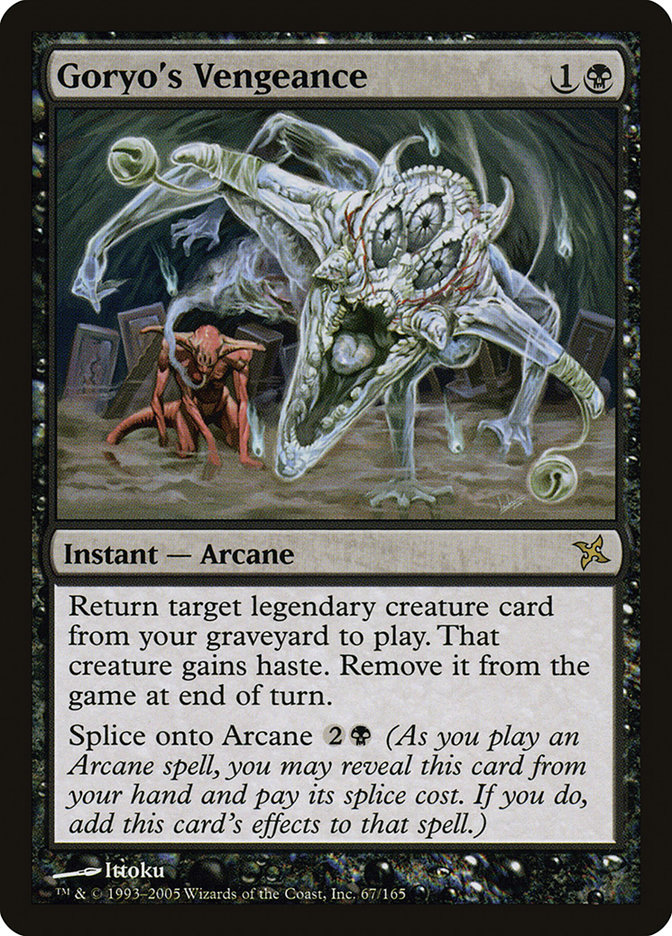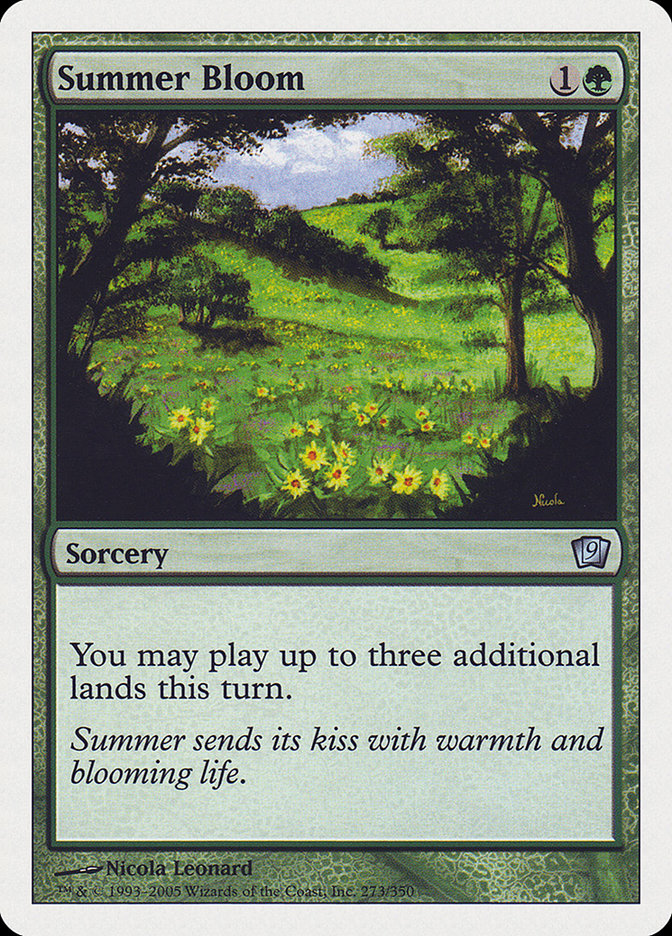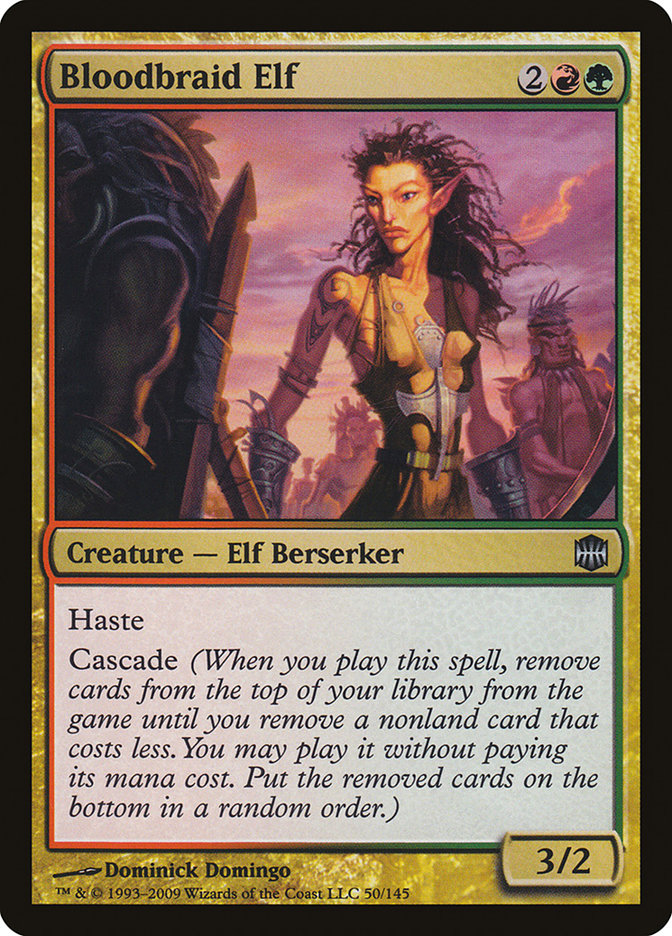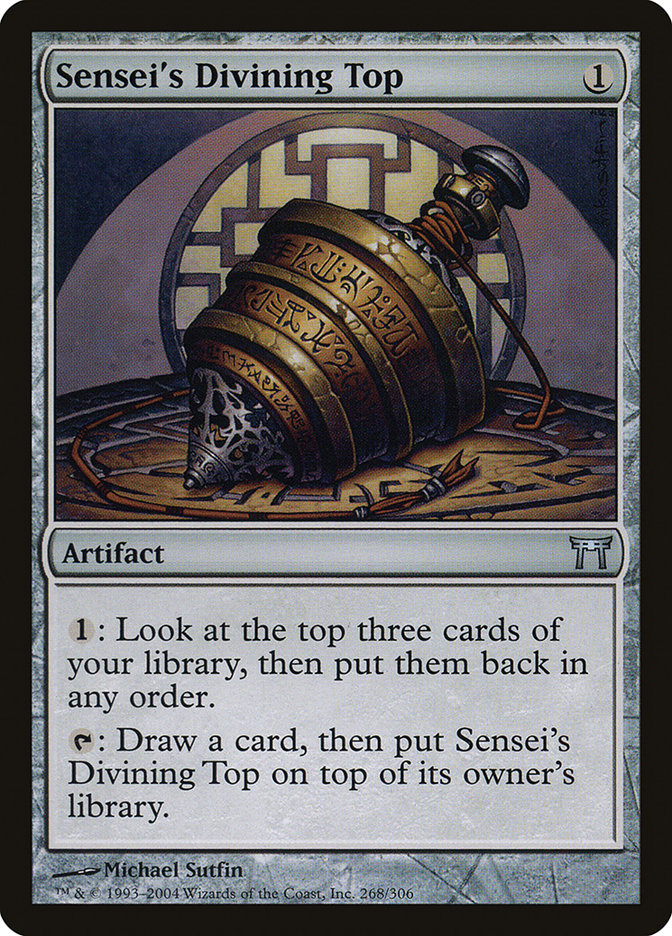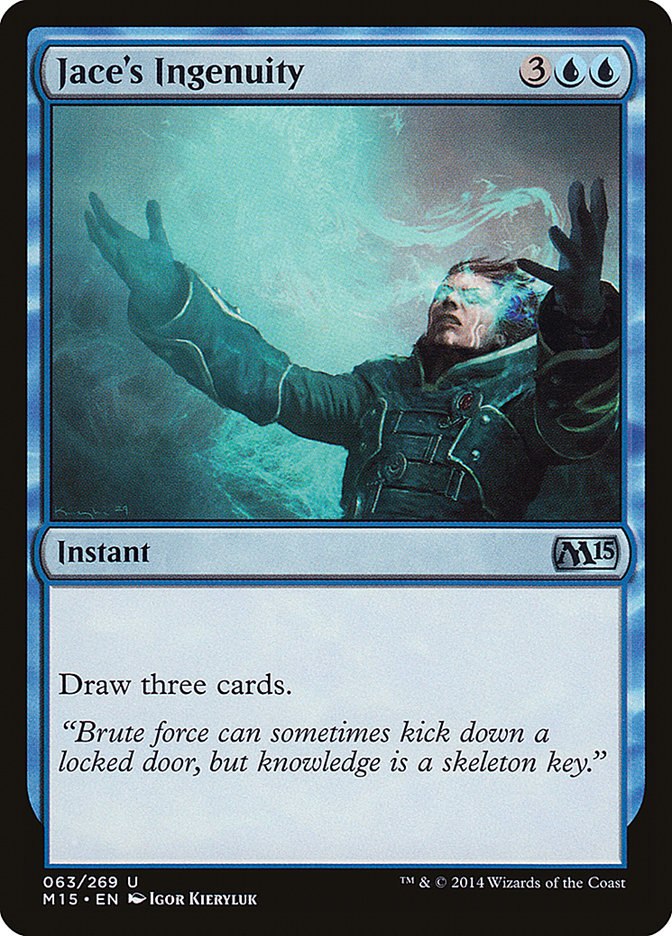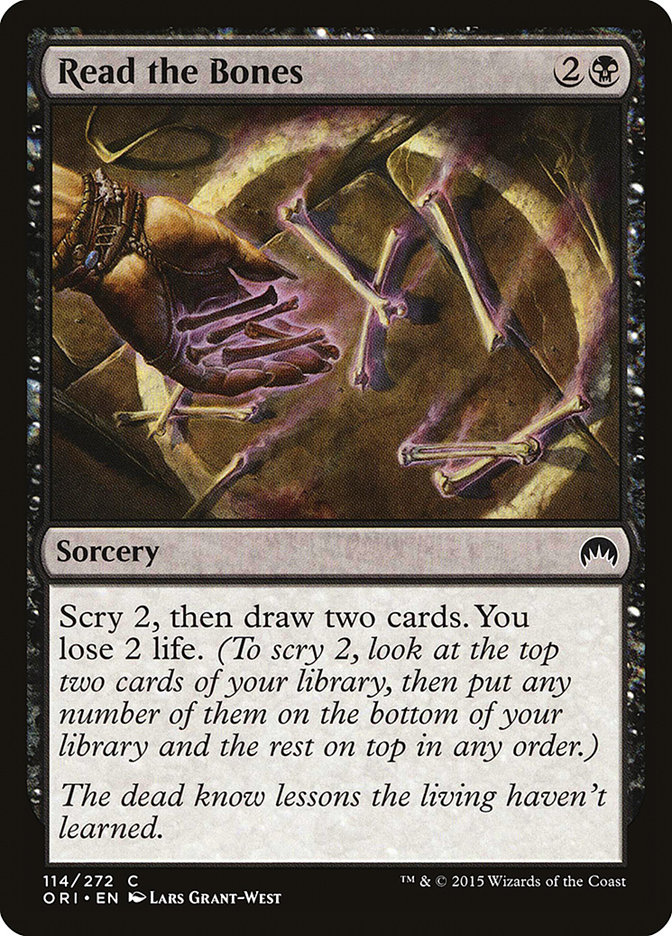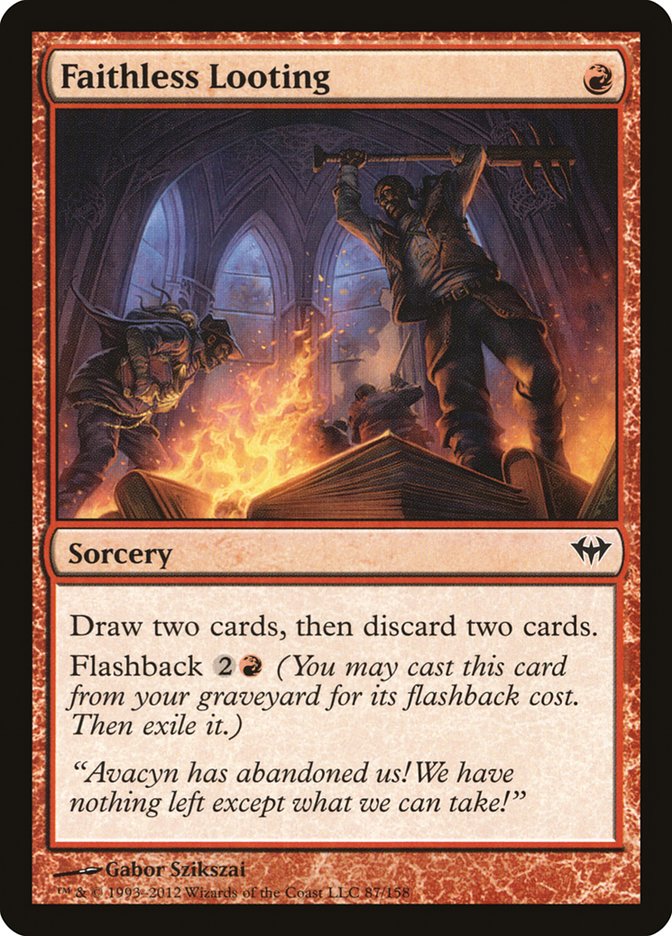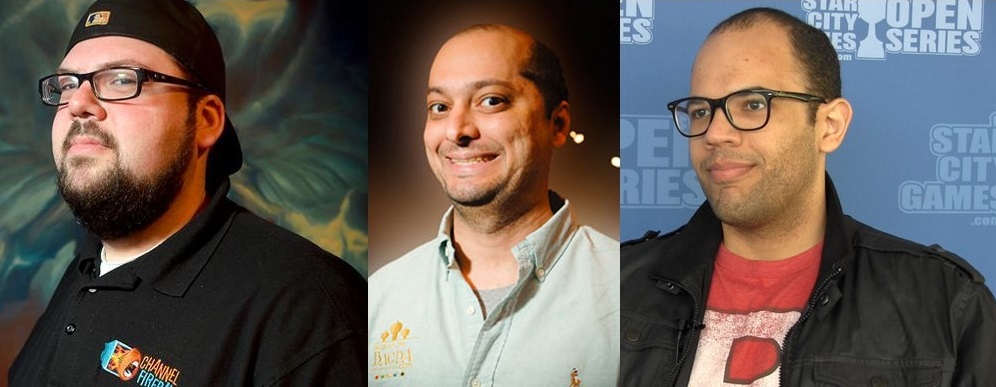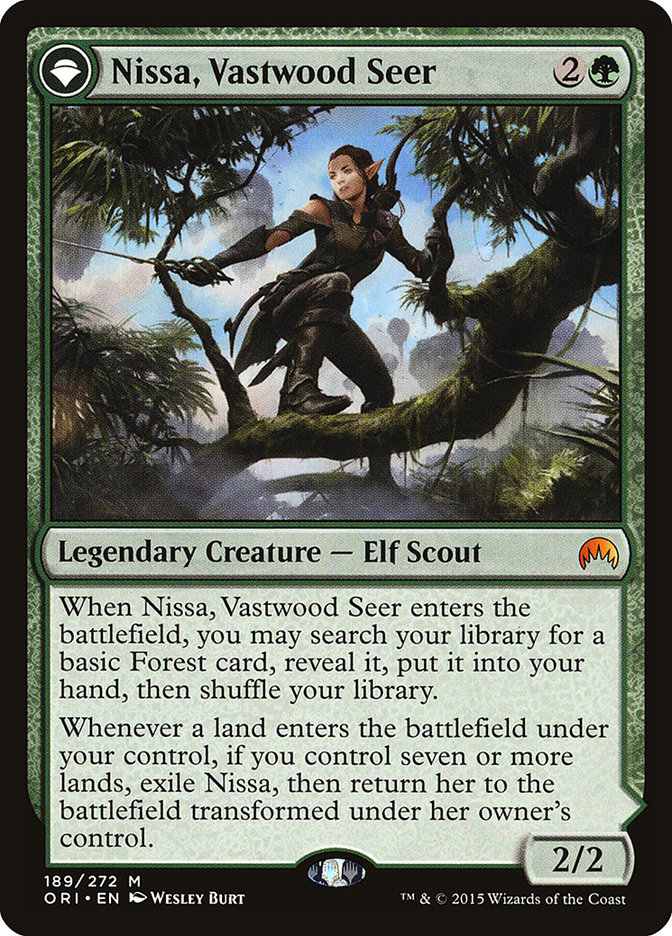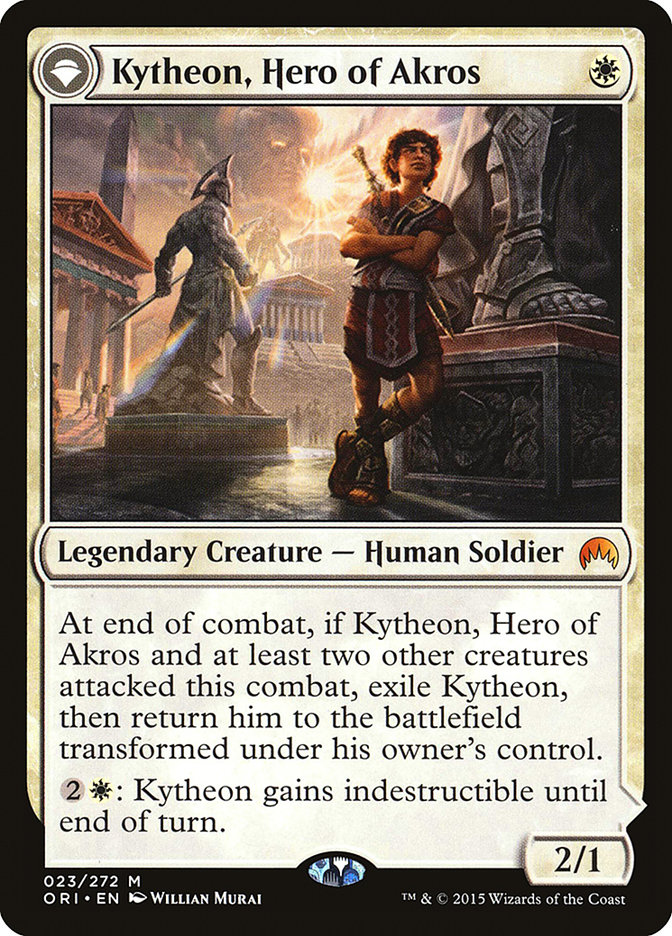CEDitors Note: Hello everyone and welcome to another edition of Fact or Fiction! In this column, two Premium writers will answer five questions provided by yours truly on Magic-related topics. At the end, you have the opportunity to vote on who won the head-to-head battle. This week, we have two-time Grand Prix Champion and the leader of the Nasty Surraksty fan club, Brian Braun-Duin, doing battle against Pro Tour Hall of Famer and the leader of the Shiro fan club, Brian Kibler!
1.) You like that no changes were made to the Modern Banned List.
Brian Braun-Duin – Fiction: I think a few cards like Summer Bloom and potentially even Goryo’s Vengeance should have gotten the axe, simply for violating the rules of the format. WotC has stated that they aren’t interested in having extremely fast combo decks in the format, and the banning of cards like Seething Song, Rite of Flame, and Blazing Shoal support this ideology. It wasn’t that a deck like Storm was a giant part of the metagame or winning every tournament when they banned those cards. Rather, Storm was just doing things that violated the nature of what they wanted the format to be.
Summer Bloom allowing Amulet Bloom decks to kill on turn two, and Goryo’s Vengeance allowing the Griselbrand decks to do the same thing, are both toeing the line of whether this is something that should be legal in Modern. There are always going to exist combinations of cards that can win the game on turn two in Modern. It’s not possible to ban them all. What is different about these cards is the frequency and consistency in which they can do it. Nivmagus Elemental or Glistener Elf can kill on turn two, but it doesn’t happen nearly as often as Amulet Bloom can assemble a hasty Primeval Titan.
I think at the very least Summer Bloom (or Amulet of Vigor) should have been banned. I don’t mind them giving Goryo’s Vengeance a little more time. However, if you’re truly asking for what I want them to do with the ban list, there are quite a few things. I think they should experiment with taking off some of these fair cards that have always existed on the ban list and that haven’t had a chance to really see how they stack up in Modern. Is Ancestral Vision too good for Modern? We don’t know. How about Jace, the Mind Sculptor or Stoneforge Mystic? And then there is Bloodbraid Elf, a card that I don’t think is any more powerful than quite a few currently legal cards. I don’t think Bloodbraid Elf should have ever been banned to begin with.
Right now, Jund is really the only truly viable fair deck in the format. Jund has enough hand disruption, land disruption, and versatile removal spells like Abrupt Decay and Kolaghan’s Command to be able to hang with most decks in the format. The other fair decks simply can’t handle all the different unfair decks that attack from a variety of different angles. It’s possible that unbanning a few cards could help breathe life into the format. If nothing else, they unbanned Bitterblossom and Wild Nacatl and neither card had any impact whatsoever on Modern. It’s possible that a card like Ancestral Vision is actually just too slow to matter anyway.
Most likely, they are planning on making changes to the Modern ban list, but they are waiting until the Modern Pro Tour to do it. That’s exciting from a perspective of having new things happen at the Pro Tour, but it really sucks for everyone else who plays the format. WotC isn’t displaying a lot of faith in this format if they are only going to ban and unban cards right before a Pro Tour because they are worried the Pro Tour field will be stale otherwise. It also really hurts Modern players who have to deal with the fact that WotC only cares about their format once a year.
Brian Kibler – Fact: I think people clamor for bans in Modern any time a deck experiences a significant amount of success, especially when it’s something like Amulet Bloom or Grishoalbrand, which are the current decks people love to hate. While they may be capable of ending the game before the turn-four threshold that WotC has stated they have as a goal for the format, they haven’t experienced a level of success or been dominant enough to warrant eliminating them from the format.
While I like that WotC is willing to use bans and unbans more liberally in Modern to shake up the format, I think it’s important that they use those tools to keep the Modern Pro Tour interesting. If we do see bans in Modern, I would expect to see them around that time next year.
2.) You like that no changes were made to the Legacy Banned List.
Brian Braun-Duin – Fact: There was a lot of discussion surrounding Sensei’s Divining Top and whether or not it deserved a ban in Legacy, especially after the last Legacy GP featured a Miracles mirror match in the finals. I even discussed the idea some in my last article.
Personally, I think it might be reasonable to ban Sensei’s Divining Top from a coverage perspective, but I don’t think it’s something they should have done yet. For one, there isn’t that much Legacy coverage, so it would only be a real drop in the water in that regard. Secondly, it’s unclear that WotC wants to start banning cards to improve coverage at this point.
I don’t think Sensei’s Divining Top is too powerful for Legacy. Unless they plan on banning cards to improve the speed and watchability of a format, then Top should definitely remain legal. I think a ban at this stage in the game would be really hasty, not well-thought out enough, and would make a lot of people unhappy. It just doesn’t seem like a good idea right now, but yet it does seem like the kind of idea we should be thinking about for the future. Banning cards to improve marketability and coverage of the game is something that should definitely be on the table.
They could have unbanned Black Vise, but it wouldn’t have affected anything in the format, so I don’t think it matters too much. It’s just silly that Black Vise is still on the banned list when it isn’t even a good card.
Brian Kibler – Fact: I don’t really play very much Legacy, and while there are certainly cards that are legal that I feel like the format might be better off without, I think it’s valuable for Legacy to be as much of a playground for people to use all of their cards as it reasonably can be. If Legacy were played more widely as something like a PTQ or frequent Grand Prix format, I could certainly see banning Sensei’s Divining Top for the same reason it got the axe in Extended and Modern. It’s just a card that leads to logistical issues in large events because of how much time it adds to games. Given that Legacy is something of a “luxury” format nowadays, I think it’s better to let those people who enjoy it the chance to play with as many of their favorite cards and decks as possible.
3.) After reading the new Magic Origins Policy Changes, you like that Drawing Extra Cards is now only a warning instead of a game loss.
Brian Braun-Duin – Fact: Much like how not revealing a morph was changed from a game loss to a warning with nearly universal support, I think this is going to end up being the same way. I think Magic is a game where we should let the game decide who wins as often as possible. Rules need to exist to punish mistakes and catch people trying to abuse the system, but any time a rule is punishing people in severe fashion who do something accidental and easily reversible, it probably needs a fix.
Most of the time people got a game loss for drawing extra cards, it was something that could easily have been fixed, and not something that affected the game in a significant fashion. I’m glad to see that less games are going to be decided by things like this and more games are going to be decided by who actually comes out on top in the game of Magic.
Brian Kibler – Fact: I think drawing extra cards being a game loss has felt like a really heavy offense for something that is easy to do accidentally for a long time. Seeing things like LSV getting a game loss in a completely unloseable game because he mistakenly picked up an extra card while comboing off with Elves in Legacy is really frustrating for both players and viewers alike.
While the new rule seems quite strange, and has some unusual implications – sometimes you’ll be better off conceding anyway rather than reveal information if your opponent can take a key card from your hand – it at least offers a less heavy-handed solution than any accidental draw simply meaning game over.
4.) With the Magic Hall of Fame Inductions right around the corner, making at least four Pro Tour Top Eights is your defining metric in the voting process.
Brian Braun-Duin – Fiction: One thing about Magic that differs from other games, like professional football, is that Magic players don’t really ever give it up. A professional football player is going to reach a point where they are simply not physically fit enough to be able to play the game anymore. It takes a lot more for a Magic player to reach a point where they are unable to sit in a chair and sling some cards around. Being in the Pro Football Hall of Fame means you’re retired and hung up your cleats. Being in the Magic Hall of Fame means you are probably still traveling around playing in Pro Tour events.
Right now, the Hall of Fame also awards its inductees the option to play in any Pro Tour events they want to. There is going to reach a point where this is simply not sustainable. If we induct five new players to the Hall of Fame every single year, then the size of the Pro Tour is also going to continue to increase every single year. At some point – and maybe we’ve even reached that point – it becomes too much to deal with.
The solutions are either to restrict entry to the Hall of Fame or to restrict Hall of Famers’ opportunities to play in the Pro Tour. By making the Hall of Fame much more exclusive, it significantly lowers the number of people being inducted and thus lowers the growing rate of people playing in the Pro Tour. Alternatively, they could also change the rules surrounding Hall of Fame Pro Tour qualifications. If they only get one PT qualification a year, for example, then this wouldn’t be nearly as much of a potential problem.
I’m okay with either solution, to be honest. Currently, four Pro Tour Top Eights seems to be the accepted metric for who should and shouldn’t make it into the Hall of Fame. If voters choose to make Hall of Fame entry more exclusive, then it’s probably not enough anymore, but currently it seems to be the bar.
Personally, I think judging candidates purely on Pro Tour Top Eights is a silly metric anyway. It seems extremely arbitrary. What if someone only has two Pro Tour Top Eights, but has a dozen Pro Tour Top Sixteens? What if they only have one Pro Tour Top Eight, but it’s a win, and they’ve won ten Grand Prix? Sometimes the difference between eighth and ninth place is 0.04% tiebreakers. I don’t have a Hall of Fame vote, but if I did I can’t imagine I would ever use four Pro Tour Top Eights as some magical line that one must cross to be allowed entry. Or vice versa, crossing that line wouldn’t immediately mean someone was Hall of Fame worthy.
Brian Kibler – Fiction: While I do think it’s important for a player to have proven themselves on the Pro Tour stage with excellent finishes, I don’t think there’s any bright line drawn at four Top Eight finishes. It would be somewhat silly for me to exclude anyone with fewer than four Top Eights from my ballot when I was actually voted in with just three Top Eights myself – two of my five PT Top Eights, including my second win, came after I had already been elected to the Hall of Fame.
In my mind, the Hall of Fame is more about a player’s overall impact on the game. While PT Top Eight success is an element of that, it’s not the only element, and I won’t totally discount someone from consideration simply because they don’t reach some arbitrary threshold.
5.) Magic Origins is the best Core Set of all time.
Brian Braun-Duin – Fiction: We haven’t even played with the set yet. I like Magic Origins, but it is way too hasty to make statements like that.
There are two ways you can look at what makes a Core Set the best of all time. You can look at it from a gameplay perspective or you can look at it from an “impact to the game” perspective.
From a gameplay perspective, I think M11 and M12 were the most powerful Core Sets of all time. I think M15 was the best Core Set in terms of gameplay. M15 Limited was actually one of the best Limited formats of all time, and M15 also had a solid but not overpowering effect on Standard, unlike M11 and M12, which were powerful and overwhelming.
From an “impact to the game” perspective, I think M10 was the best Core Set of all time. It completely shifted the paradigm of how they were printing Core Sets. Instead of being hilariously underpowered cards and boring reprints, M10 had some exciting reprints and powerful new cards. M10 was the first time we saw planeswalkers being reprinted, with the original Lorwyn five coming back for a second go around. We also got to see new cards being printed with enormous effect on the game, like Baneslayer Angel. M10 paved the way for the style of Core Set we see today, and for that reason I think it is definitely the best Core Set of all time from an impact perspective.
Magic Origins might end up being the best at some point, but that remains to be seen and proven.
Brian Kibler – Fiction: Alpha was the best Core Set of all time, since it introduced all of the ideas that make Magic so great. As far as modern sets go, it’s possible that Magic Origins is in the running for the best Core Set, but I’m not willing to award it that moniker until I’ve had a chance to play with it more. It’s certainly the most interesting from a creative perspective. Seeing the origin stories of the five planeswalkers portrayed through the cards in the set is great, from the flip planeswalkers themselves to the other creatures from their home planes and the spells showing key moments of their lives.
Previous Core Sets have felt largely disconnected from a story perspective, which has really left them feeling like they play second fiddle creatively to the block sets. Magic Origins feels much more cohesive than any of the Core Sets before it, which definitely sets it above the rest in a way, but I’m not willing to call it the best just for having a good story. I’ve enjoyed playing with it so far, and it’s been a lot of fun, but the jury is still out on it being the best.

